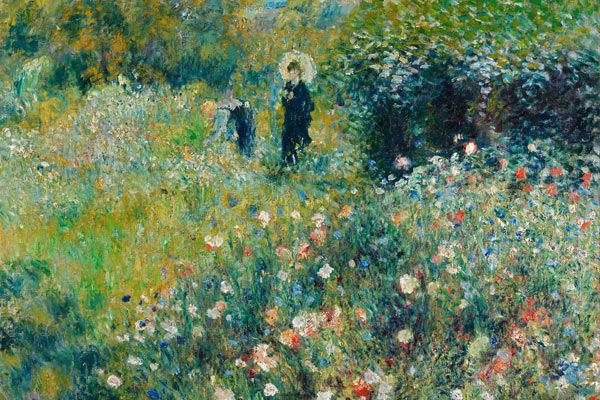
Renoir, Impressionist and Rococo
Pierre-Auguste Renoir - Woman with Parasol - 1875Pierre-Auguste Renoir - La Promenade - 1870
From 2 March to 19 June 2022, the Städel Museum presents "Renoir. Rococo Revival", an exhibition that examines the references to Rococo in the work of Pierre-Auguste Renoir.
Images: Pierre-Auguste Renoir, " Woman with a Parasol in a Garden " (1875, Thyssen Museum, Madrid), and “La Promenade” (1870, Getty Museum, Malibú)
For me, a painting must be a pleasant thing, joyous and pretty – yes, pretty. There are too many unpleasant things in life for us to fabricate still morePierre-Auguste Renoir
Among all the painters associated with the Impressionist movement, Pierre-Auguste Renoir (1841-1819) was the most inclined to include the concept of "classical" beauty in his paintings, resorting to ornament and a sensuality that was then somewhat out of fashion. More than a century before Flora Yukhnovich became one of the young stars of the art market with her reinterpretation of the Rococo language, Pierre-Auguste Renoir, who had been trained as a porcelain painter, had already looked to Fragonard, Watteau and the great masters of the movement.
"Renoir. Rococo Revival" includes some 120 works, including canvases and works on paper, both by Renoir and his contemporaries (Morisot, Degas), as well as paintings by some of the Rococo artists who influenced his style. Among Renoir's works are two of his most famous paintings, both from American museums: "Oarsmen at Chatou" (1879, National Gallery of Art, Washington), and "La Promenade" (1870, Getty Museum, Malibu). Among the works by Rococo artists is one of the versions of Jean-Antoine Watteau's "The Embarkation for Cythera"
The exhibition “not only ties in with past large-scale exhibitions of modern French art at the Städel, but also closes one or the other gap in what is, surprisingly, a little-researched area of Impressionism”, explained Philipp Demandt, Director of the Städel. The curators of the exhibition, Alexander Eiling, Juliane Betz and Fabienne Ruppen, explained that in Renoir's work “tradition and modernity interplay in a productive way: His reinterpretations of well-known and again-fashionable subjects in Rococo art as well as his modern fêtes galantes, genre and boudoir scenes, nudes, and still lifes splendidly integrate themselves into the homes of his collectors with their luxuriant Rococo-style furniture”.
Read the full article

